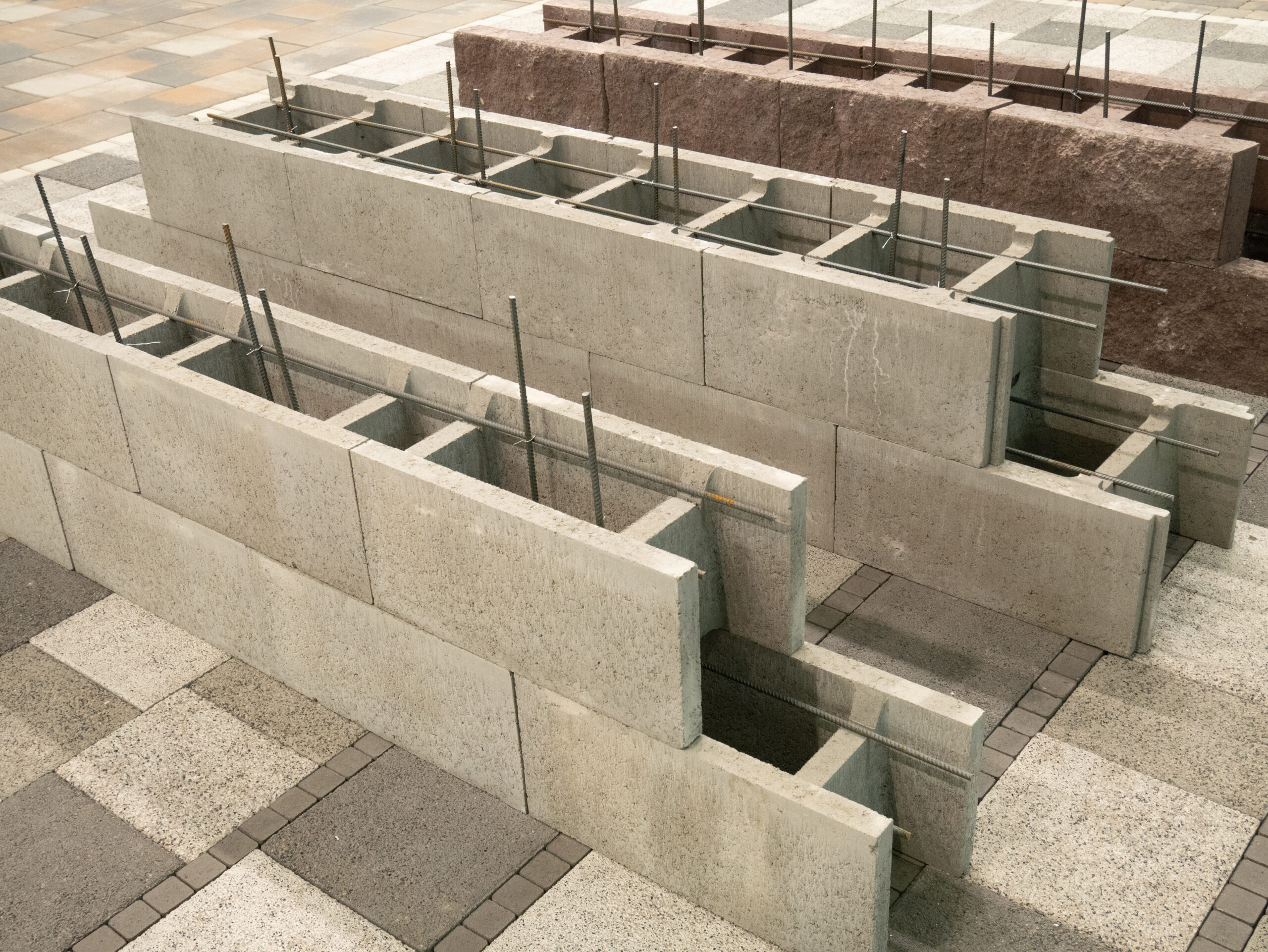At first glance, walls using concrete blocks might seem very similar to precast concrete walls. Both are made by pouring concrete into frames. Both are made with essentially the same concrete mixture. Even the strength is very similar.
So, why would you choose precast concrete over block walls? What are the major differences between the two?
Let’s drive in…
Flexibility of the Wall Design
With block walls, your wall can only really look like a basic wall, and you don’t have a wide variety of styles to choose from. You can paint the block wall, but it can be time-consuming and difficult. With precast concrete, there is a lot more flexibility in the design and look of the wall. You have an endless possibility of designs to choose from, and custom walls can be created.
Do you want a fun, long-lasting color or an interesting texture? Pigment and aggregates can be added to the concrete before it’s poured into the molds.
Custom molds can be created to reach whatever design goals you have easily. Maybe you are looking for a design or pattern that is unique – that’s easy. If a simple, but classic brick or stone style is what you are looking for, that is easy to achieve too.
Speed of Installation
This is just a matter of numbers. Concrete blocks are, on average, 8 inches by 8 inches by 16 inches. Precast concrete walls sections come in large panels that can be as tall as your wall and several inches or feet wide.
Concrete blocks are either mortared into place or dry stacked with a thin layer of concrete covering the whole wall. Regardless of how the concrete wall is built, the blocks will still need to be stacked one by one and will usually require a specialized worker to do the job.
Precast concrete doesn’t require specialized workers to install it. The only thing it might require, depending on the size of the wall panels, is a crane or other machine to help lift them into place. Each panel is lifted over the evenly spaced posts and slid into place.
Wall Reinforcing Methods
Reinforcement is commonly added to concrete structures to make them stronger. Reinforcing is used in both precast concrete walls and block walls; however, the methods of building and installation are very different. Precast concrete typically has a steel cage that is placed inside the mold. When the concrete is poured into the mold, the steel reinforcement is encased in the concrete wall.
Concrete blocks are typically hollow. As the concrete blocks are stacked, the steel rods are placed in the hollow middle. Grout or concrete is used to fill the center and keep the reinforcement in place. If the size of the reinforcing steel and the number of rods placed is similar, concrete blocks will have a strength much like precast concrete walls.
Blocks are Hollow; Precast is Not
As we said before, concrete blocks are built with a hollow center. This is to reduce the weight of the blocks, making them easier to stack. Precast concrete is not hollow. This makes precast concrete heavier, even though it is often thinner than a concrete block wall – necessitating the crane to help place it.
When building your next concrete wall, choose precast instead of a hollow block wall. Not only will your building and installation be quicker, but you’ll also see much greater flexibility of design, so you get the wall you want. Contact American Precast, Inc. today to get a free custom estimate for your precast concrete wall.







